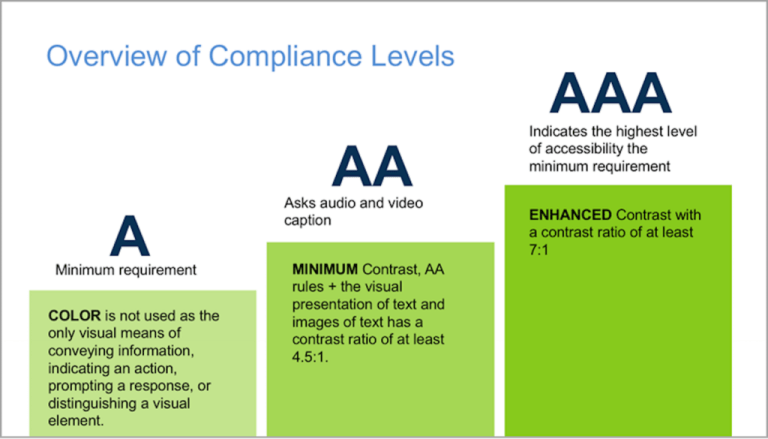
Strong DEI initiatives leave the checkbox approach behind and require a strategic, intentional approach all year long. While Google’s DEI journey continues, here are some important lessons we’ve learned so far.
Research shows there is still work to do: 75% of employees feel that the current diversity programs in place at their company deliver no personal benefits for them, according to HBR.
getty
As a society, we’ve learned that building workforces which reflect and respect our diverse identities and personal backgrounds and views must be done with intention. Top of mind for me, as a leader in the diversity, equity, and inclusion (DEI) space, is that we are confident that our organizations can truly serve the breadth and depth of who we are as individuals and as groups of people brought together with common goals and interests. I’m convinced that we must use the COVID-19 era to renew our aspirations and commitments to achieving our DEI goals, especially as the Covid pandemic has struck many of the most marginalized communities the hardest.
Celebrating the U.S. and Canadian Black History Month at Google is an important way to honor and highlight the contributions, voices, and experiences of the Black community in our industry. However, we also recognize that for this and all DEI initiatives to have an impact, they require a strategic and intentional approach all year long, reaching all employees, and building equity into our programs and processes.
When done right, strong DEI initiatives enable mutually reinforcing practices that deliver a safe, fair, and inclusive work environment, building trust and a sense of belonging for employees to feel empowered to innovate and do their best work. And it’s about more than just doing the right thing for your people–it’s good for your bottom line. Companies with the most diverse executive teams are 36% more likely to outperform their peers on profitability.
But research shows there’s still work to do:
- While most employees say their organization emphasizes diversity and inclusion, one in five cannot point to anyone who demonstrates its importance through actions.
- 75% of employees feel that the current diversity programs in place at their company deliver no personal benefits for them.
- While overall sentiment on diversity at companies is generally positive (52%), inclusion is markedly worse at only 29% positive.
Part of the problem is that too often organizations rely on conventional demographic categories, according to research from Boston Consulting Group (BCG). This often fuels traditional majority versus minority mindsets that lead companies to overlook workplace experiences that may not fall under visible demographic groups. Avoiding these pitfalls will require leaving behind checkbox approaches and refocusing DEI efforts towards understanding the needs of every individual.
So, how can companies build a representative workforce and inclusive teams?
At Google, we have spent years of research embedding DEI into everything we do, from how we build our products to how we build our workforce. And while it’s a journey that we’re still on, we have learned some important lessons along the way.
We published a report based on those lessons learned in August 2021 detailing six important ways leaders can build DEI into their businesses.
1. Set aspirational goals
Table of Contents
- 1 1. Set aspirational goals
- 2 2. Make DEI everyone’s responsibility
- 3 3. Pay attention to how management deals with diversity
- 4 4. Be intentional about measures to mitigate biases that show up in processes
- 5 5. Let your data do the talking
- 6 6. Prioritize actions with the greatest impact
- 7 Empower your teams in the moments that matter
It is vital for you to set objectives for how you envision your teams will represent users and how leadership will represent teams—make sure to share these goals widely, including with those outside your team.
This could range from setting hard numbers to hit for increasing leadership representation or new hires within historically underrepresented groups. However, it can also include goals for increasing the number of employees who complete outcome-driven DEI trainings, growing the number of job positions offered within certain geographical regions, or experimenting with certain skill proficiency requirements for jobs that may help reveal pathways to new, undiscovered talent.
No matter what you choose to focus on, setting goals are critical for helping move you beyond promises. It not only provides a common aim to work toward, it ensures you make creating a culture that encourages acceptance, inclusion, and identity a top priority.
See you in the cloud.
Google Cloud
2. Make DEI everyone’s responsibility
Diversity, equity, and inclusion isn’t just an HR or leadership mission, these concepts impact everyone within an organization. It’s important to make it a challenge and responsibility for every employee, and that means holding everyone accountable.
One area that many organizations tend to fall short is putting substantive action and mechanisms in place to make sure that DEI is supported and enforced at all times. Diverse hiring, for example, won’t amount to much unless you actually create a space that actually listens to those diverse voices and implements change based on those alternative perspectives.
Accenture Google Business Group, for instance, believes building what they refer to as “psychological safety,” an environment that promotes listening, learning, and contributing without fear of failure, into their teams to bring out the full potential of diversity.
“We create that environment for [unusual thinkers] to allow themselves to wake up every morning and be true to who they are,” said Colleen Hoagland, Managing Director at Accenture, during Google Cloud’s Next conference in October 2021. “We’ve shifted the paradigm away from [specialized talent personas] to be truly human. That is a true differentiation about Accenture. We really deeply care about our humans and our individuals and what each person brings to the conversation, and the ability for us to be successful in business.”
3. Pay attention to how management deals with diversity
Managers hire and grow talent, make key product and sales decisions, and are responsible for creating culture and systems at the core of your company. This means it is essential to integrate accountability for diversity, equity, and inclusion outcomes into every manager’s role.
One way we do this at Google is our #ItsUpToMe platform, which was rolled out in more than 30 countries across Europe, the Middle East, and Africa (EMEA) to help encourage leaders to make DEI goals a personal commitment. The program provides them with a proven tool—Objectives and Key Results (OKR). An interdisciplinary team of DEI experts and human-resource specialists develop these OKRs in close collaboration with employee-led, volunteer-based Employee Resource Group representatives to ensure that the goals are specific, actionable, and drive meaningful impact. We track progress against these OKRs as part of our biannual performance review process.
“When we talk about improving diversity, equity and inclusion in our org, everyone wants to help! However, it’s not always clear what the best way to help is, and I think that’s what #ItsUpToMe solves for,” said Ade Trenaman, director of engineering and site lead for Google Shopping EMEA.
The “follow through” helps ensure and gauge the success of DEI-specific OKRs. We accompany managers and leaders on their DEI journeys, bring them together as a group and encourage them to share what they’ve learned with their teams. This program drives scaled change by integrating DEI directly into our business processes so it can be measured like any other core objective.
Related: Black History Month: Celebrating the success of Black founders with Google Cloud Switchboard Live
4. Be intentional about measures to mitigate biases that show up in processes
Unfortunately, bias is often hardwired into the processes we have created to run our business. Building awareness is the first step to paving the way to acceptance and inclusive workplaces.
While there’s no silver bullet when it comes to identifying bias, we’ve found that it’s important to interrogate how all your processes—including every step of the hiring process, feedback, performance ratings, promotions, and more—affect underrepresented groups at your company. It’s helpful to consider a wide range of areas, including race, ethnicity, ability, sexual orientation, and gender.
Related: Sowing the seeds of ethical AI: 4 tasks to stay on track
Along with embedding DEI values in key HR processes to ensure equity, it’s also important to consider how to encourage conversations and education that can help others consciously identify and reduce cases of bias—intentional and accidental in the workplace.
At Google, we are proud that 84% of managers globally have taken Unconscious Bias training, which is one step on the journey.
One great example of encouraging honest DEI conversations is Googler Jenae Butler’s Standing United resource, which she created to help educate her colleagues about racial injustices within the U.S. and how to practice allyship successfully. Developed in the aftermath of the murder of George Floyd as an additional resource for her team, and created under her own initiative, Butler intended the Standing United presentation deck to help Google employees understand their feelings about what had happened and be better allies to the Black+ community. Standing United was so powerful that it resonated beyond her peers at Google, and reached many in the Black+ community and beyond.
5. Let your data do the talking
To achieve representation, data transparency is key for figuring out where you’re at and what else you need to do. It’s critical to measure for fairness across people, processes, and outcomes, while also ensuring accountability across the entire organization.
Google was one of the very first tech companies to measure our own representation in an annual diversity report, which helps us to transparently share our data and progress. Today, we publish one of the largest sets of intersectional and geographical diversity data in the industry about our successes, the challenges we are facing, and the concrete actions we are taking to solve them.
Related: Women in leadership: A conversation on Diversity, Equity and Inclusion
6. Prioritize actions with the greatest impact
It’s impossible to do everything especially when you’re growing quickly. To have a real impact and move the needle forward, it’s important to prioritize actions that are most likely to bring the greatest amount of change.
The scope here can be as large as broadening access opportunities to underrepresented groups in STEM or as small as managers automatically making presentations more accessible to tools like screen readers. The main focus should be on the steps that will have the most impact on meeting your DEI goals for the future.
We have found that picking from a curated list of pre-identified impactful objectives and results can help keep you moving in the right direction. Once an objective has been selected, you should consistently test, measure, and iterate to make sure that you deliver the right outcomes.
Empower your teams in the moments that matter
Reaching ambitious DEI goals won’t happen overnight. Rather, incorporating DEI into your business is an ongoing process.
As organizations, we should all be constantly working to build a long-lasting framework that will ensure every employee feels appreciated, valued, and heard as individuals when it matters most—even if the definition of what those mean evolves over time.
Read this next: Black History Month: Celebrating the success of Black founders with Google Cloud: TQIntelligence







